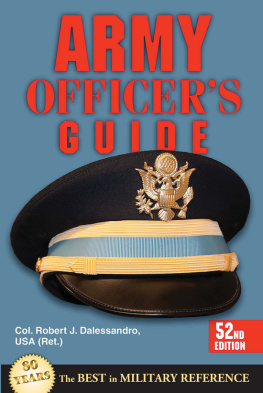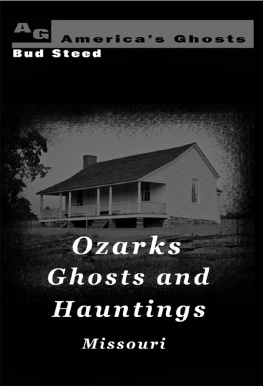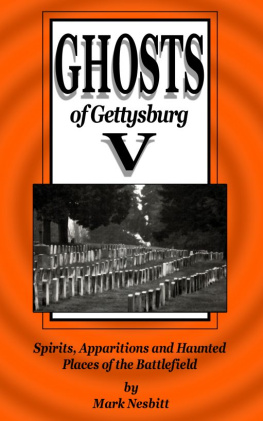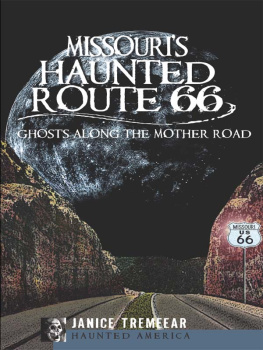About the Author
Colonel (Retired) Robert J. Dalessandro is Director of the United States Army Center of Military History at Fort Lesley J. McNair, Washington, D.C. He was commissioned in the United States Army after graduating from the Virginia Military Institute with a degree in history in 1980. His graduate studies include work at the College of William and Mary, where he studied historical archeology; a masters degree in Military Arts and Science in history from the U.S. Army Command and General Staff College; a masters degree in Strategic Studies from the U.S. Army War College; and a graduate certificate in Museum Collections Management and Care from George Washington University.
After beginning his career in 1980 as a Second Lieutenant in the U.S. Army, he served in a wide variety of leadership and staff assignments, including commands at the company, depot, and battalion levels, and staff assignments at echelons of command from battalion through Department of the Army level. Colonel Dalessandro retired from the U.S. Army in June 2009 after serving as director of the U.S. Army Heritage and Education Center in Carlisle, PA.
He is considered one of the Armys foremost experts on battlefield interpretation, and is widely published on the life, ways, and material culture of the American soldier. He is editor of the Army Officers Guide , and coauthor of Organization and Insignia of the American Expeditionary Force, 19171923 ; Willing Patriots: Men of Color in the First World War ; American Lions: The 332nd Infantry Regiment in Italy in World War I ; The 100 Greatest Military Photographs ; and The Great War: A World War I Historical Collection .
Colonel Dalessandros numerous awards and decorations include the Legion of Merit, the Meritorious Service Medal with seven Oak Leaf Clusters, the Army Commendation Medal with three Oak Leaf Clusters, the Meritorious Unit Citation, the National Defense Service Medal, the Overseas Service Ribbon with three Oak Leaf Clusters, and the Parachutist Badge.
Acknowledgments
This edition would not have been possible without the assistance of numerous members of the U.S. Army Center of Military History and the Army staff who graciously assisted over the course of the project; their support allowed for an absolutely top-notch product.
My particular thanks go to Lt. Gen. David H. Huntoon, the 58th Superintendent of the U.S. Military Academy, for taking time out of his busy schedule to assist with this project; thank you for your enduring love of American soldiers and your dedication to developing the Armys and Americas future leadership.
The following individuals contributed their thoughts, insights, and professional expertise to the development of much of this book: Here in Washington, D.C., Col. Conrado Morgan, Maj. Michael Gambone, CW2 Mike Knapp, Siobhan Ausberry, Jim McNaughton, John Paschal, Chris Semancik, Dr. Richard Stewart, Carrie Sullivan, James Tobias, and Gerald Torrence were all invaluable to this effort. Cynthia Spoehr ensured that the latest information on family support was included, while Ginger Shaw labored over the most important issues covered in this edition; I cannot thank you both enough. A special thanks goes to Dr. Steven E. Anders, U.S. Army Combined Arms Support Command/Sustainment Center of Excellence; Mr. Richard E. Killblane, Transportation Corps Center and School; Mr. Leo Hirrel, Quartermaster Center and School; and Mr. Rufus Montgomery, Logistics Corps Proponency Office for your updates in the ever-changing world of logistics and sustainment. At the U.S. Army War College at Carlisle, Col. John Bonin, USA (Ret.), provided up-to-date information on the ever-changing Army organization, and Molly Bompane was ever helpful with myriad issues!
Thank you to Ms. Kathryn Fulton, reference editor at Stackpole Books, for allowing me the privilege of revising this edition of the Army Officers Guide .
Most of all, I would like to thank my wife, Rebecca, for her enduring support to all my great ideas, her keen editorial eye, and her sense of style, protocol, custom, and courtesy; and to my son, Lieutenant John Marshall Dalessandro, serving with the 101st Airborne Division (Air Assault), continue to care for, protect, and lead Americas soldiersyou always make me proud!
Robert J. Dalessandro
Fort McNair, D.C.
Appendices
Appendix A
Pay and Allowances
Army personnel are assured that their services are appreciated by our government. There have been times in the past when military pay rates lagged far behind the pay scales in private industry, and indeed even far behind the pay scales of federal civilian employees, but periodically the pay rates are adjusted to provide approximate comparability with the civilian sector.
BASIC PAY AND ALLOWANCES
How Pay Is Established. Federal pay rates are set using the Department of Labors Employment Cost Index, which tracks the cost of all salary raises nationwide. Federal civilian pay rates are adjusted each year in relation to rates for comparable work in private industry. Originally, the adjustments to pay were to be made effective 1 October each year, but in recent years the adjustments have been made three months later on 1 January.
Although the comparability study applies strictly to federal civilian employees, the Federal Employees Pay Comparability Act of 1990 requires that military personnel receive the same average pay increase as civil servants. Thus, an increase in federal civilian pay automatically results in an equitable increase in military pay.
Military Pay. The Defense Finance and Accounting Service (DFAS) web site displays the current military pay information and rate tables. Access it at https://mypay.dfas.mil/mypay.aspx.
Service Creditable for Basic Pay. As seen in the tables, pay increases in each grade with length of service. In computing the years of service for pay purposes, credit is given for all periods of active service in any regular or reserve component of any of the uniformed services. Credit may also be granted for service other than active duty. Officers are advised to consult the finance officer servicing their pay accounts with a statement of all their military service for consideration of credit that may be given under the laws.
Basic Allowance for Subsistence (BAS). The BAS is the same for all officers, regardless of grade. The amount is adjusted periodically as the base pay is adjusted. The BAS is not subject to income tax. The monthly rate for officers in effect January 1, 2012, was $239.96.
Basic Allowance for Housing (BAH). In 1998, BAH was initiated as the new housing allowance. BAH is based on geographic duty location, pay grade, and dependency status. The intent of BAH is to provide uniformed servicemembers accurate and equitable housing compensation based on housing costs in local civilian housing markets, and it is payable when government quarters are not provided.
DOD and the services developed BAH to improve and enhance housing allowances for all members, taking into account complaints about the old variable housing allowance (VHA) program. Eligible members receive one monthly dollar amount for BAH, in place of a separate VHA and basic allowance for quarters (BAQ). A grandfathering provision, known as rate protection, keeps individuals from experiencing reductions in housing allowances, as long as their status remains unchanged. Rate protection continues until the member incurs a change in status, defined as a PCS move, a decrease in grade, or a change in dependency status. Promotions are specifically excluded in the definition of change in status. Like BAQ, BAH distinguishes between with dependents and without dependents, but not the number of dependents.
Members will not see dramatic increases in housing allowances in any one year, because changes are being phased in over a multiyear period, based on the need to protect individuals from decreases (rate protection). Generally speaking, the new rates are increased in high-housing-cost locations, for junior members, and for without-dependent members.













